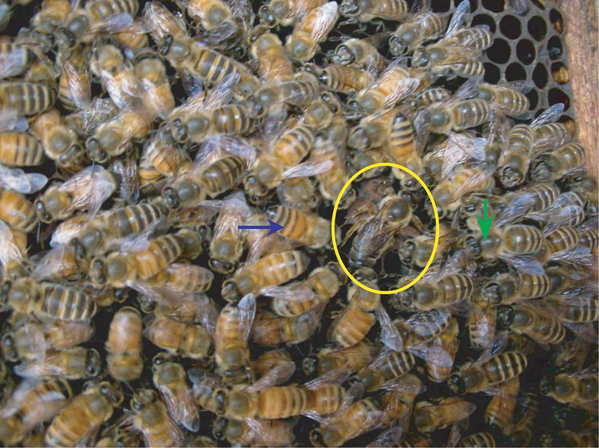Seems it's not just Shufflers who use dance to communicate with other Shufflers that have different languages. Honey Bees do it too !
They have their own Dance Languages, with local dialects and can learn foreign languages...and all understand each other.
Researchers found the different species can peacefully live, work and share food together, because of the language of dance.
What a buzz eh ? ;)
> See original research http://www.plosone.org/article/info%3Adoi%2F10.1371%2Fjournal.pone.0002365
Chee Chee Leung
June 5, 2008 The Age
HONEYBEES can use the power of dance to communicate with bees from the other side of the world, according to new research that suggests the insects are able to learn "foreign" languages.
The world's nine honeybee species separated about 30 million years ago and have since developed their own dance "languages", which scout bees use to share information about discoveries such as food.
Popular moves include the "round" dance, where bees spin in a circle when food is close by. The more sophisticated "waggle" manoeuvre, used to indicate the distance and direction of far-off food sources, involves a body shake by the bees in the middle of running figure-eight loops.
While it was known that members of a honeybee colony exchange information through dance, a team of scientists from Australia, China and Germany have shown for the first time that these dance languages can be translated across bee species.
The researchers created a mixed colony of thousands of Asian and European honeybees, and observed that the two species — the most geographically distant — could learn to understand each other's dance dialect. After a period of adjustment, the two species were able to work together and share information to gather food, and Asian honeybees learned to interpret the dance moves of European forager bees to reach feeding sites.
The study also confirmed that the two species had distinct dialects, as the European honeybee, or Apis mellifera, performed a much shorter "waggle" dance for any given distance than the Asian honeybee, Apis cerana.
"We have direct evidence that these two species of bees have different dialects but can understand each other and communicate to each other," said Dr Shaowu Zhang , of the Australian National University.
"The dance language of honeybees is among the best-studied communication systems in the animal kingdom. Nevertheless, surprises are still possible, as we have shown."
Dr Zhang said the work showed that two species of honeybees can "peacefully live together". He said the findings would help improve understanding of animal communication and social learning. The research was published yesterday in the PLoS ONE journal.

No comments:
Post a Comment